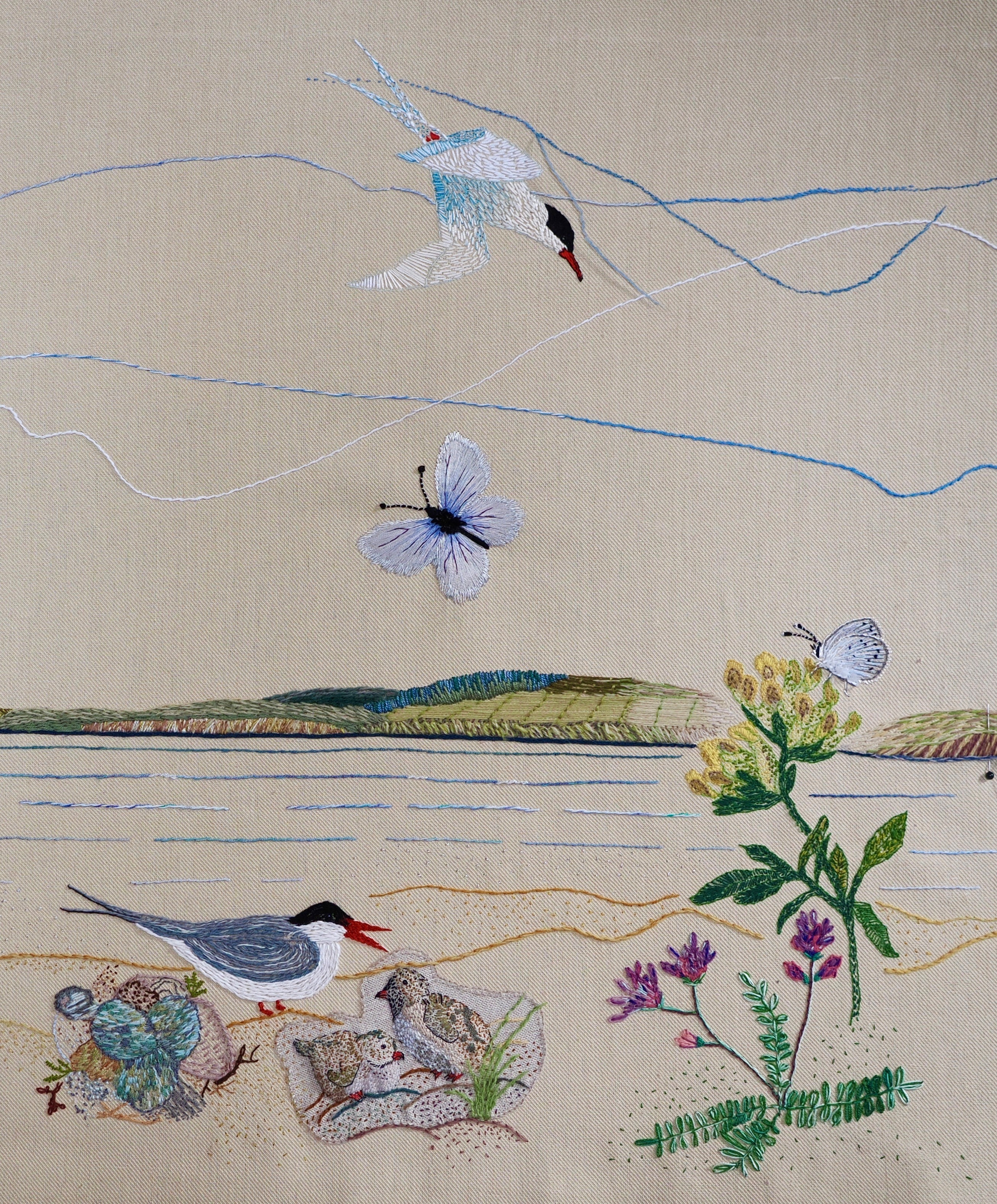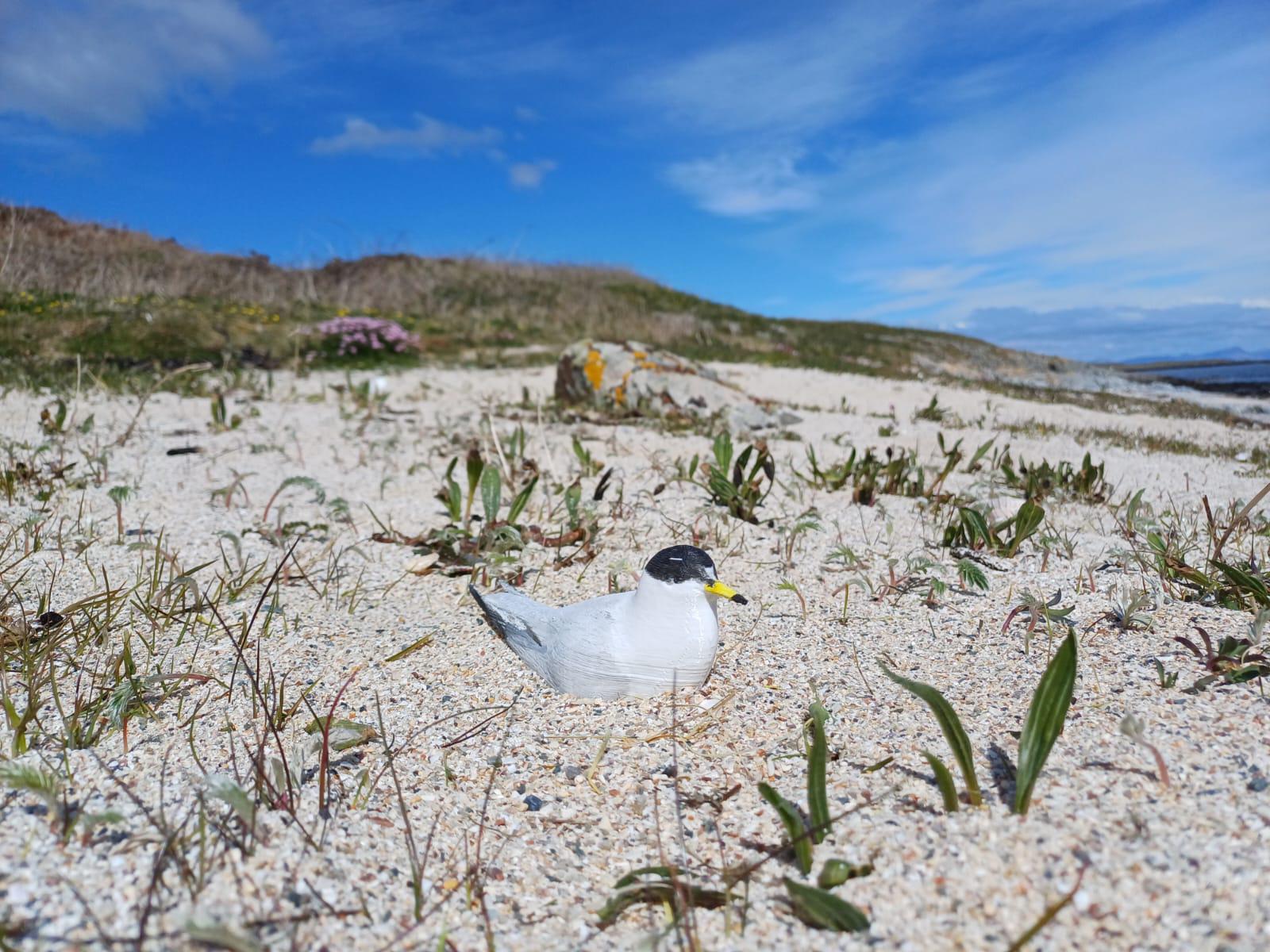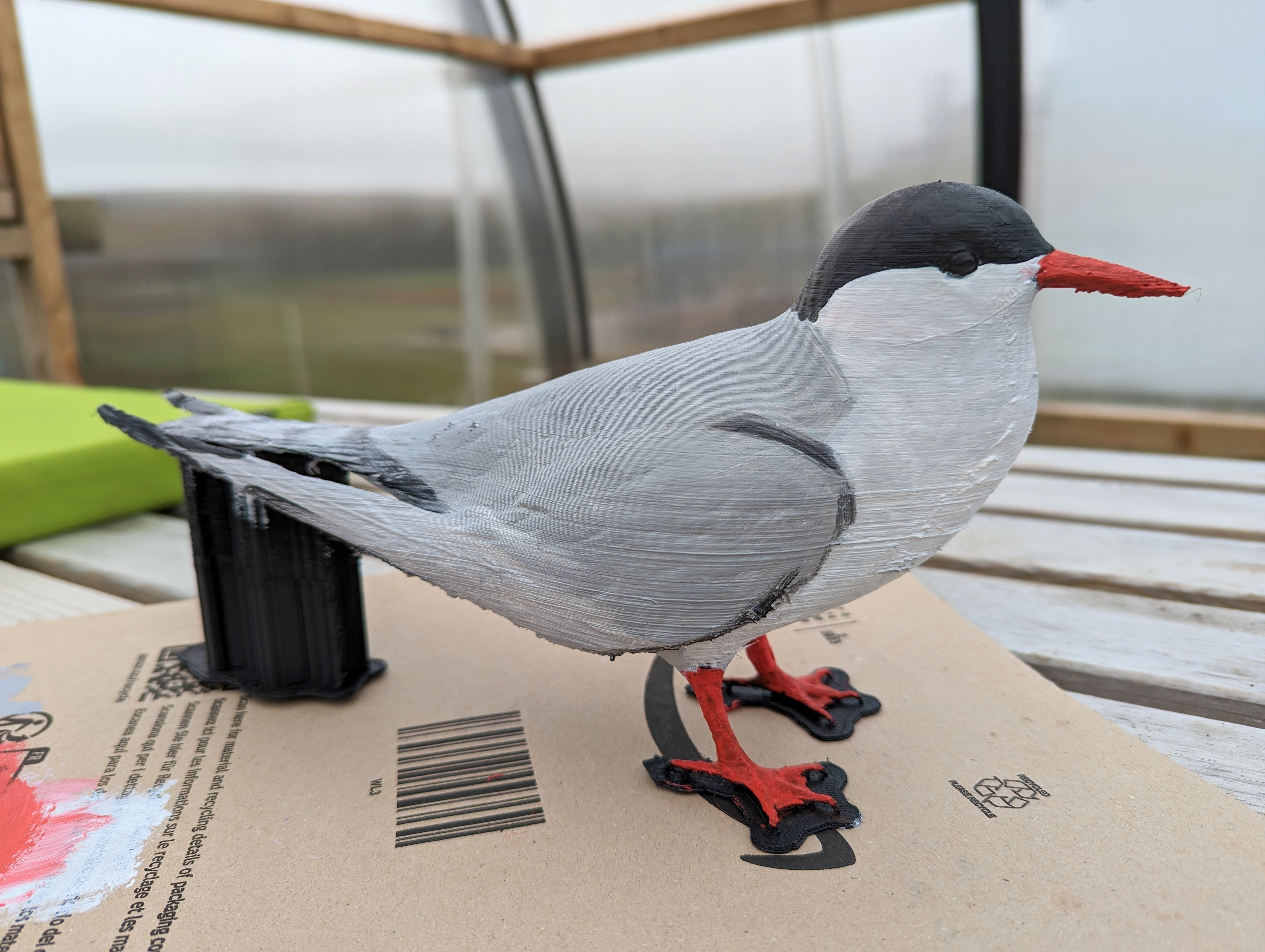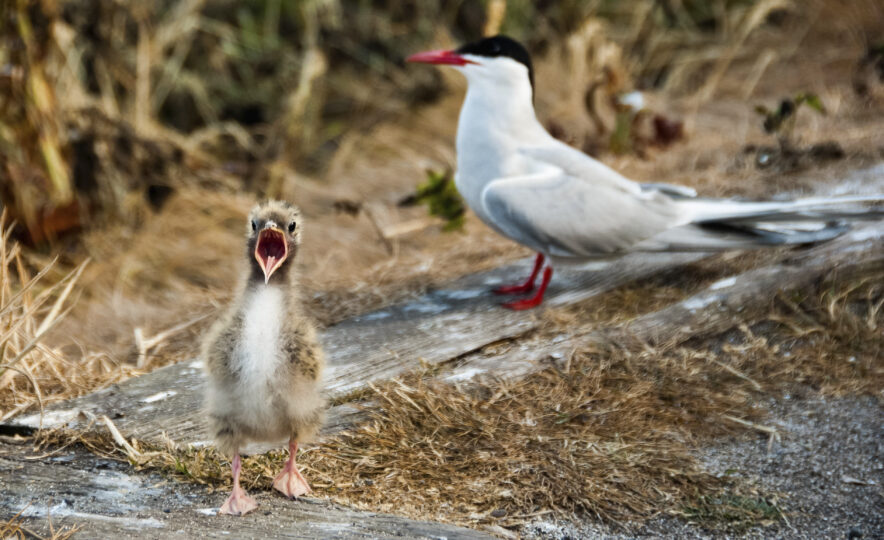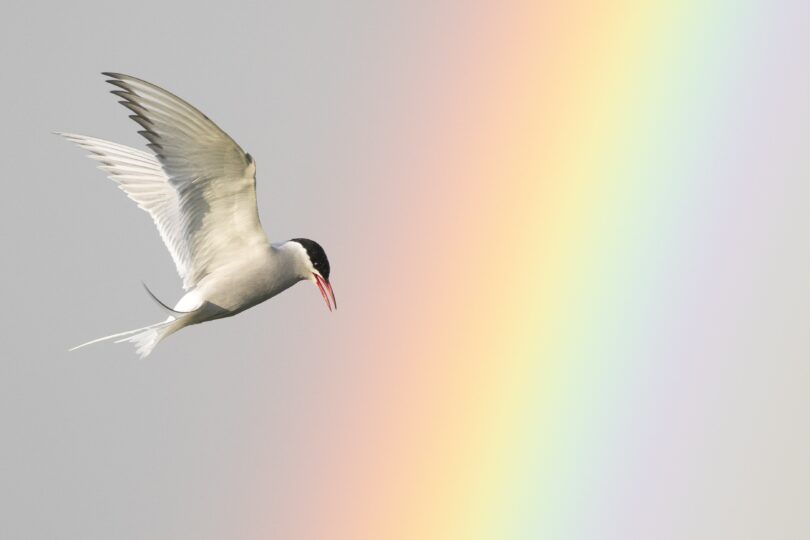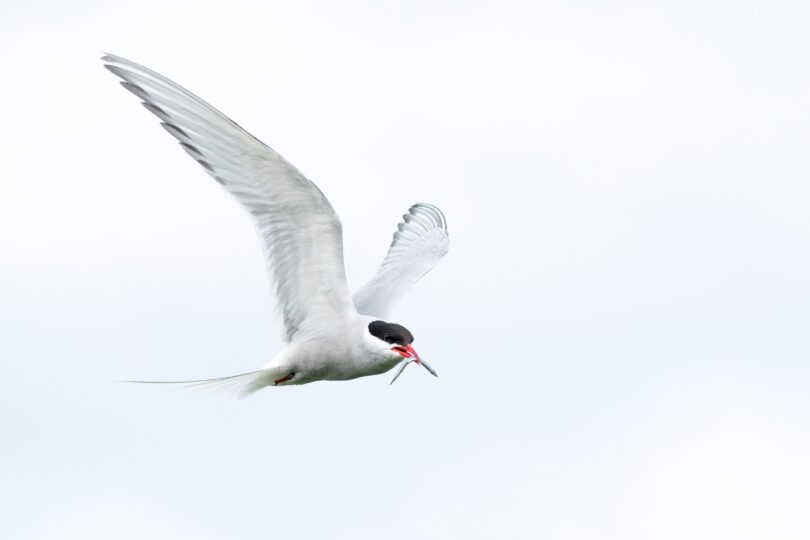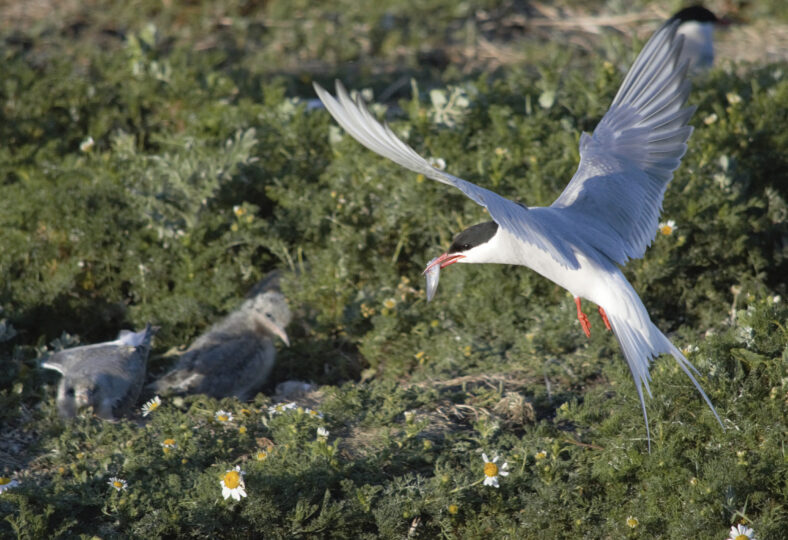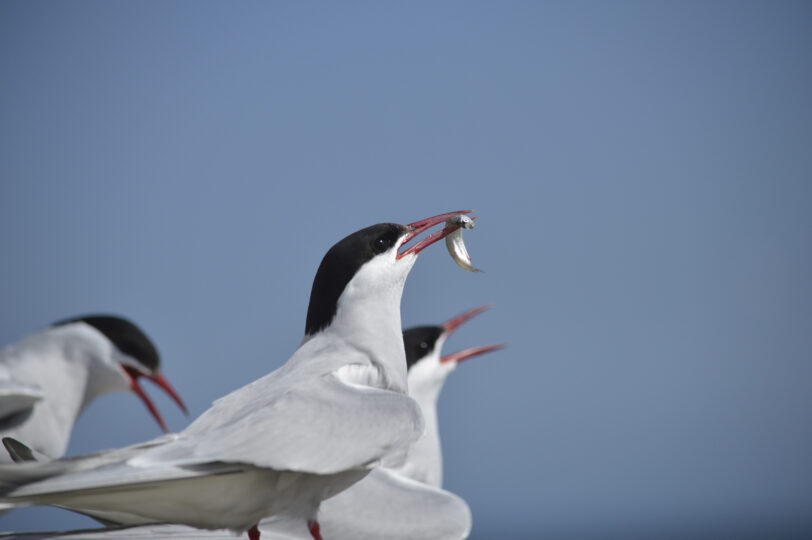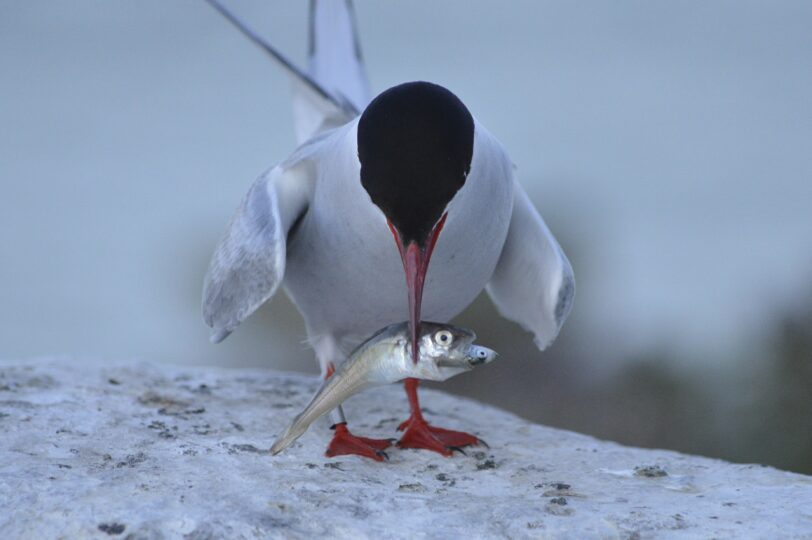
Key facts
- Gaelic name: Steàrnag an earbaill
- Length: 33-35cm | Wingspan: 75-85cm | Weight: 95-120g
- When in Scotland: May – August
- UK Conservation status: Red
- Species on the Edge areas: East Coast; Outer Hebrides; Orkney
Species information
How to identify
Arctic terns are a delicate and elegant tern species with long tail streamers, earning it the nickname ‘sea swallow’. Arctic terns have white cheeks, smoky grey underparts and pale grey upperparts and a striking black crown. The short legs and bill are both deep red.
Lifecycle
Arctic Terns usually start breeding when they are 3 or 4 years old. They breed at high latitudes in the Arctic and then travel south in time for summer in the Antarctic. Their migration covers around 25,000 miles making it the longest migration of any bird. Potential lifespan can be up to three decades.
Distribution
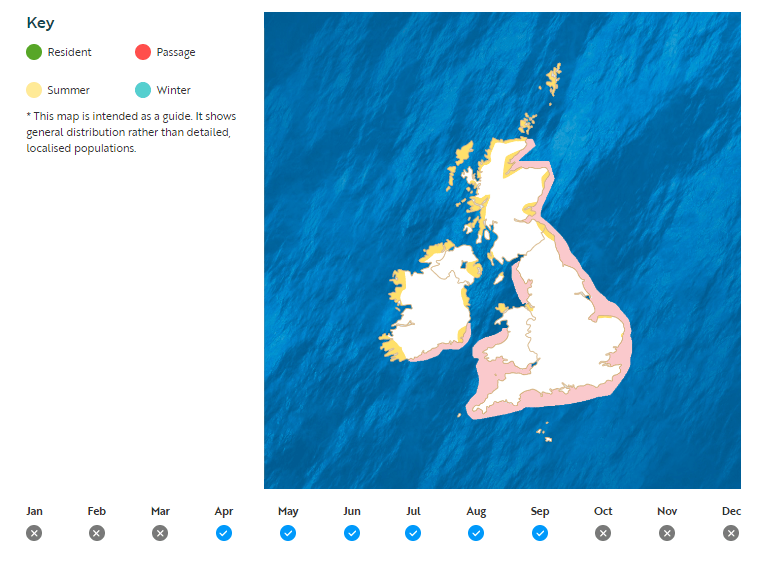
Habitat and feeding
Arctic terns most frequently breed on the coast or on offshore islands, preferring areas of sand or shingle. Out of the breeding season it is a seabird, seldom crossing land and sometimes perching on floating objects including ice flows.
Feeds mainly on fish including sandeels, sprats, herring etc. Arctic terns can be seen fishing in shallow coastal waters. When fishing they appear hesitant as they hover above the sea before plunging into the water.
Conservation status
UK Conservation Status: Red
Threats
-
Food shortages – Overfishing of small fish is one cause, but long-tern climate change resulting in changes of fish stocks is also a hazard.
-
Disturbance – As once remote beaches are becoming more popular with walkers and dogs this can lead to increased disturbance.
-
Predation – Predation can be a problem at some sites, in particular non-native mink but also foxes, otters, and gulls.
What Species on the Edge is doing
-
Creating new breeding sites
-
Enhancing established sites through effective habitat management
-
Protecting tern colonies from disturbance using signage and fencing
-
Engaging with local communities to increase awareness of terns and the threats they face and inspire community-led conservation action
Our work for arctic terns
Resources
If you are interested in learning more about Arctic terns, or are interested in getting involved in their conservation, get in touch with your local Species on the Edge team.
